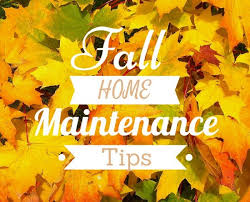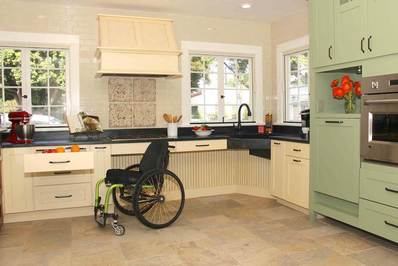|
Moving is a big job, but when you're a senior and you're moving from the home you've raised your family in to something smaller, you have some specific considerations you have to make. You can take measures to reduce the stress of the days ahead. Here's a guide to help you through the process as you get ready to downsize and prep for your move.
1. Knowing When It's Time to Downsize Life happens quickly. One day you're in the midst of raising your kids, tripping over one another in a house that barely seems big enough, and the next your kids are grown and you're left with a large house that's more work than it seems to be worth. Most homeowners do not buy their homes with the intent of downsizing, but as they enter their senior years, the realities of owning a large home begin to catch up with them. Knowing when it's time to downsize is not always easy, but these tips and guidelines should help a little. Here are some signs that it's time to consider downsizing:
2. Sorting Belongings Once you've made the decision to downsize, then it's time to sort through your stuff. Moving to a smaller place means you can't take everything with you, no matter how attached you are to your things. To sort, you will need to sort your things into four basic categories: Keep, Store, Sell/Give, and Trash. Start with one area of your home at a time, even if it's just one closet or one dresser, and go through each item, deciding which fits into which category. If you're having trouble figuring out what to toss, look for these key signs that something is best thrown out or given away:
3. Packing to Move Now comes the job of packing. This is not an easy task, so make sure you give yourself enough time to do the job well. It's important to remember that packing is a physically demanding job. You are not as young as you once were, so give yourself enough time to handle the task without physical stress or injury. Here are some tips that will help make the job a little safer:
4. Hiring Movers or DIY Move? After you have started downsizing your belongings and packing, you're going to need to make one of the most important decisions in this process - are you going to handle the move yourself, or hire someone else to do it for you. Before weighing the pros and cons, ask yourself a couple of questions:
5. Keeping Moving Day Safe After all of your planning, packing and preparation, when moving day finally arrives, you're going to want to take some measures to ensure everyone and everything is safe. This is a big job, so a little forward planning is not going to be a bad idea. First, you are going to want to make sure you are not injured during the move. To avoid a serious back strain or even more serious injury, make sure you:
Next, make sure you take measures to avoid damage to your belongings. Make sure you stack boxes carefully, with heavier boxes on the bottom and lighter boxes on the top. Label the boxes so the top and bottom are clearly seen, and make sure you load the truck so that the heavy times are distributed near the front. This will protect the balance of the truck while driving to your new home. Finally, make sure anything that might shift during transit is tied down and secured properly. You don't want to arrive at your new home with damaged belongings! 6. Prepare for the Emotional Side of Moving For some, moving involves a new adventure, and as such is an exciting time, but this is not the case for everyone. Some people find the transition to be a challenge, especially if they are giving up living in a place that they made family memories. The home where children were raised and grandchildren were welcomed can be hard to leave. To prepare for the emotions of moving, make sure you first embrace them. It's normal to feel a bit sad when making this type of transition! Don't fear these emotions, as they are a healthy part of settling in to your new normal. That said, sometimes the sadness can turn into something more. Be aware of the fact that some seniors will struggle with a condition called Relocation Stress Syndrome after making a major move. This is defined as a "physiologic and/or psycho-social disturbance as a result of a transfer from one environment to another." Signs of this syndrome include:
7. Getting Settled in Your New Home Once you've moved, take some time to get settled in your new space. Here are some tips to help you settle in more quickly.
As you sort through your belongings, you will find that you have a number of items that are still in good shape, but you simply don't need. In these instances, you will need to decide whether you are going store those items, sell them or bequeath them to your beneficiaries now. Making this choice is not always easy. Here are some guidelines that can help. First, decide which items you want to hang on to for a while. This is a highly personal decision, and will depend on how much storage space you have, or whether or not you choose to purchase a storage unit. If items hold specific sentimental value, are items you need on occasion and still think you will need or want to bequeath but aren't ready to do so now, then you need to store those items. Keep in mind that the more you store, the more you will have to spend for storage. Next, decide if there are any items you want to go ahead and pass along to the next generation. This can be a very rewarding way to part with your items. You will be able to see the next generation enjoy your items, but you won't have to store them. Some items that it makes sense to bequeath now include:
9. Tips for Family If your elderly loved one is planning a move, here are some ways you can help with the transition:
1 Comment
With summer just around the corner, now is a great time to get your home in top shape for the months ahead. Whatever your weather, caring for your home now will help to ensure a worry-free, comfortable summer. Follow a few of these tips each week and enjoy the rest of the season knowing that your home is in good shape.
INDOORS
OUTDOORS
The days are getting noticeably shorter, and maybe there's a nip in the air - sure signs that fall is on its way. Now is the perfect time to get your home in shape before winter rolls in, while the weather is still pleasant enough for spending time outdoors.
Seal it up: Caulk and seal around exterior door and window frames. Look for gaps where pipes or wiring enter the home and caulk those as well. Not only does heat escape from these openings, but water can enter and may eventually cause mold problems and even structural damage. Look up: Check the roof for missing or damaged shingles. Winter weather can cause serious damage to a vulnerable roof, leading to a greater chance of further damage inside the home. Although you should always have a qualified professional inspect and repair the roof, you can do a preliminary survey from the ground using binoculars. Clear it out: Clear gutters and eaves troughs of leaves, sticks, and other debris. Consider installing leaf guards if your gutters can accommodate them - they are real time savers and can prevent damage from clogged gutters. Check the seams between sections of gutter, as well as between the gutter and downspouts, and make any necessary adjustments or repairs. No hose: In climates with freezing weather, drain garden hoses and store them indoors to protect them from the elements. Shut off outdoor faucets and make sure exterior pipes are drained of water. Faucets and pipes can easily freeze and burst, causing leaks and potentially serious water damage. Warm up time: Have the furnace inspected to ensure it's safe and in good working order. Most utility companies will provide basic inspections at no charge, but there can often be a long waiting list come fall and winter. Replace disposable furnace air filters or clean the permanent type according to the manufacturer's instructions. Using a clean filter will help the furnace run more efficiently, saving you money and energy. Light that fire: If you enjoy the crackle of a wood-burning fireplace on a chilly fall evening, have the firebox and chimney professionally cleaned before lighting a fire this season. Creosote, a byproduct of wood burning, can build up to dangerous levels and cause a serious chimney fire if not removed. Happy Fall Yall! Carolina Senior Transitions Team 704-900-3218 Your children have finally moved out and you and your spouse now live alone in a four-bedroom colonial (or a similar type of house). You have two choices to make:
If you currently live in a 3-4-bedroom home, you probably bought it at a time when your children were the major consideration in determining family housing needs. Along with a large home, you more than likely also considered school district, the size of the property and the makeup of other families living in the neighborhood (example: you wanted a block with other kids your children could play with and a backyard large enough to accommodate that). Remodeling your home to meet your current needs might mean combining two bedrooms to make one beautiful master suite and changing another bedroom into the massive walk-in closet you always wanted. However, if you live in a neighborhood that historically attracts young families, you may be dramatically undermining the value of your house by cutting down the number of bedrooms and making it less desirable to the typical family moving onto your block. And, according to a recent study, you will recoup only 64.4% of a remodeling project’s investment dollars if you sell in the future. Your home is probably at its highest value as it stands right now. Instead of remodeling your house, it may make better financial sense to sell your current home and purchase a home that was built specifically to meet your current lifestyle and desires. In many cases, this well-designed home will give you exactly what you want in less square footage (read less real estate taxes!) than your current home. Bottom Line: If you are living in a house that no longer fits your needs, at least consider checking out other homes in your area that would meet your lifestyle needs before taking on the cost and hassle of remodeling your current house. Wouldn't the ideal house be one that works to everyone's benefit, no matter age or ability? Universal design makes such a house a possibility.
Incorporating universal design allows for a house that addresses the abilities of all groups and ages and makes homes more livable for everyone. It is often referred to as barrier-free living. Design features could include no-slip floors and tubs that increase safety for everyone in a home. Other examples of universal design characteristics are lever door handles that serve the person with arthritis and the person entering a room with an armful of groceries equally well. And no-step entries make it simple for seniors to safely move from room to room. Aesthetic Upgrades Products used in universal design once had an institutional feel to them. Now they're sleek and modern and marry safety with style. Aging In Place Comfortably The features are especially beneficial as people age and face more limited mobility. Living in homes designed with universal design principles makes it more likely that you'll be able to age in place with comfort. Increase Home Safety Universal design can also prevent falls, the leading cause of injury among older adults. Even simple changes, such as raising light levels, removing throw rugs and installing handrails and grab bars, can enhance the safety of a home considerably. For more information about universal design or have any questions contact the Carolina Senior Transitions Team at 704-900-3218. A study by Edelman Berland reveals that 33% of homeowners who are contemplating selling their houses in the near future are planning to scale down. Let’s look at a few reasons why this might make sense for many homeowners, as the majority of the country is currently experiencing a seller’s market.
In a blog, Dave Ramsey, the financial guru, highlighted the advantages of selling your current house and downsizing into a smaller home that better serves your current needs. Ramsey explains three potential financial advantages to downsizing:
Realtor.com also addressed downsizing in an article. They suggest that you ask yourself some questions before deciding if downsizing is right for you and your family. Here are two of their questions followed by their answers (in italics) and some additional information that could help. Q: What kind of lifestyle do I want after I downsize? A: “For some folks, it’s a matter of living a simpler life focused on family. Some might want to cross off travel destinations on their bucket lists. Some might want a low-maintenance community with high-end upgrades and social events. Decide what you want to achieve from your move first, and you’ll be able to better narrow down your housing options.” Comments: Many homeowners are taking the profits from the sales of their current homes and splitting it in order to put down payments on smaller homes in their current locations, as well as on vacation/retirement homes where they plan to live when they retire. This allows them to lock in the home price and mortgage interest rate at today’s values which makes sense financially as both home prices and interest rates are projected to rise. Q: Have I built up enough equity in my current home to make a profit? A: “For most homeowners, the answer is yes. This is if they’ve held on to their properties long enough to have positive equity that will be sizable enough to put a large down payment on their next home.” Comments: A study by Fannie Mae revealed that only 37% of Americans believe that they have significant equity (> 20%) in their current home. In actuality, CoreLogic’s latest Equity Report revealed that 78.9% have greater than 20% equity. That equity could enable you to build the life you’ve always dreamt about. Bottom Line If you are debating downsizing your home and want to evaluate the options you currently have, let's meet up to help guide you through the process. The Carolina Senior Transitions team is happy to announce our new firm relationship with Wilkinson ERA Real Estate. Here are just a few reasons why we are excited to join this great local real estate firm. More details to come.
Highlights:
According to data from the U.S Census bureau, there are approximately 76.4 million baby boomers living in the United States today. Contrary to what many think, there are very different segments within this generation, and one piece that sets them apart are their housing needs. John McManus, editorial director of Hanley Wood’s Residential Group says his company “is focusing on the preferences of the younger half, or second-wave baby boomers, as they exhibit different needs than the older boomers.” What are ‘second-wave baby boomers’ looking for? McManus says, “They are seeking a fun, dynamic lifestyle with a home that can also adjust to their changing needs in the future. Living space should either include accessibility features, such as doorway space, lower shelves, and nonslip surfaces, or be easily adjustable when the time comes.” In a homebuyer study performed by The Farnsworth Group, the participants revealed their reasons for purchasing a new home. The top three factors that influence their purchase include area/location (50.2%), price/affordability (37.4%), and the layout of the home (19%) (as shown in the graph below). The report also found that when buying a new home, there were other concerns like quality of construction (9%), a safer neighborhood (8.4%), better floor plans (8.25%). The most important rooms or areas are the kitchen (82.8%), master bedroom (59.2%), and great room (36%).
Technology also plays an important role! Second-wave baby boomers prefer wireless security systems (7.1%), lighting that senses and adapts to them (6.3%) and integrated home technology, including “smart” thermostats and lighting controlled by a smartphone (6.2%). Grey Matter Research and Consulting points to a sense of community as a major factor in wanting to purchase: “The first impressions are important when entering a new community, as is feeling welcome in the community. Amenities such as clubhouses, pools, and walking trails featured prominently in the decision to purchase in a community. Location was key, as residents want their new homes to be near shopping, dining, medical services and entertainment.” Bottom Line If you are one of the many ‘second-wave’ baby boomers who is starting to feel like their current homes no longer fit their needs, take advantage of the low inventory of existing homes in today’s market by selling your current home and moving on to one that truly fits your new lifestyle. |










 RSS Feed
RSS Feed
